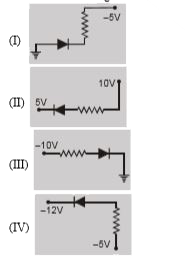Which of the following is incorrect for isothermal reversible
ΔH=0
ΔU=0
ΔT=0
ΔW=0
To determine which statement is incorrect regarding isothermal reversible expansion, we need to analyze the properties of an isothermal process and the definitions of enthalpy (ΔH) and internal energy (ΔU).
1. Understanding Isothermal Process:
- An isothermal process occurs at a constant temperature. For an ideal gas undergoing an isothermal expansion, the temperature remains constant throughout the process.
2. Change in Internal Energy (ΔU):
- For an ideal gas, the change in internal energy (ΔU) is a function of temperature only. Since the temperature is constant in an isothermal process, ΔU = 0.
3. Change in Enthalpy (ΔH):
- The change in enthalpy (ΔH) is given by the formula:
ΔH=ΔU+Δ(PV)
- Since ΔU = 0, we can simplify this to:
ΔH=Δ(PV)
- For an ideal gas, PV = nRT, and since the temperature (T) is constant, any change in volume (V) will result in a change in pressure (P) such that the product nRT remains constant. Therefore, Δ(PV) is not necessarily zero.
4. Work Done (W):
- The work done by the system during an isothermal expansion can be calculated using the formula:
W=−∫PdV
- This work is not zero; it is equal to the area under the curve in a PV diagram during the expansion.
5. Identifying Incorrect Statement:
- Based on the above analysis, the incorrect statement regarding isothermal reversible expansion is that ΔH is zero. This is incorrect because while ΔU is zero, ΔH can be non-zero due to the change in pressure and volume.
Conclusion:
The incorrect statement for isothermal reversible expansion is that ΔH is zero.
- An isothermal process occurs at a constant temperature. For an ideal gas undergoing an isothermal expansion, the temperature remains constant throughout the process.
- For an ideal gas, the change in internal energy (ΔU) is a function of temperature only. Since the temperature is constant in an isothermal process, ΔU = 0.
- The change in enthalpy (ΔH) is given by the formula:
ΔH=ΔU+Δ(PV)
- Since ΔU = 0, we can simplify this to:
ΔH=Δ(PV)
- For an ideal gas, PV = nRT, and since the temperature (T) is constant, any change in volume (V) will result in a change in pressure (P) such that the product nRT remains constant. Therefore, Δ(PV) is not necessarily zero.
- The work done by the system during an isothermal expansion can be calculated using the formula:
W=−∫PdV
- This work is not zero; it is equal to the area under the curve in a PV diagram during the expansion.
- Based on the above analysis, the incorrect statement regarding isothermal reversible expansion is that ΔH is zero. This is incorrect because while ΔU is zero, ΔH can be non-zero due to the change in pressure and volume.
The incorrect statement for isothermal reversible expansion is that ΔH is zero.
Topper's Solved these Questions
Similar Questions
Knowledge Check
Which of the following can be zero for isothermal reversible expansion?
AΔEBΔHCΔTDAll of theseWhich of the following is not reversible
AJoule effectBPeltier effectCSeebeck effectDThomson effectWhich of the following is true in case of isothermal changes?
AΔT=0BΔUInt=0CΔQ=0DΔUInt)+ΔW=0
Which of the following is a characteristic of a reversible reaction ?
View SolutionWhich of the following is a characterisstic of a reversible reaction ?
View SolutionWhich of the following is a characteristic of reversible reaction?
View SolutionWhich of the following gate is reversible
View SolutionWhich of the following is reversible process
View Solution

